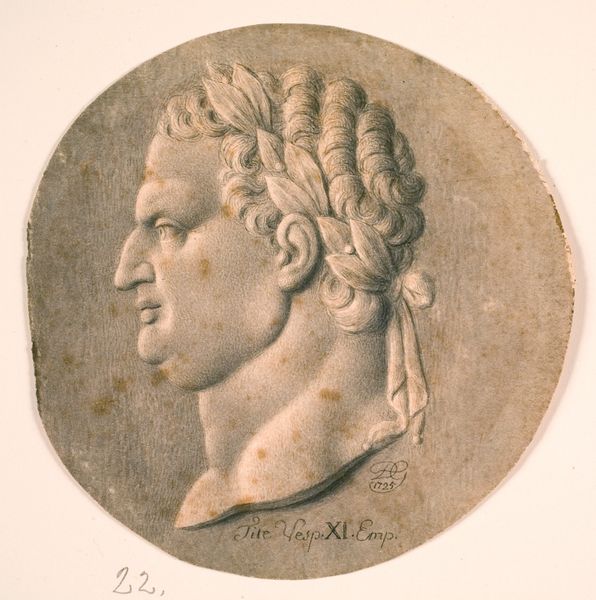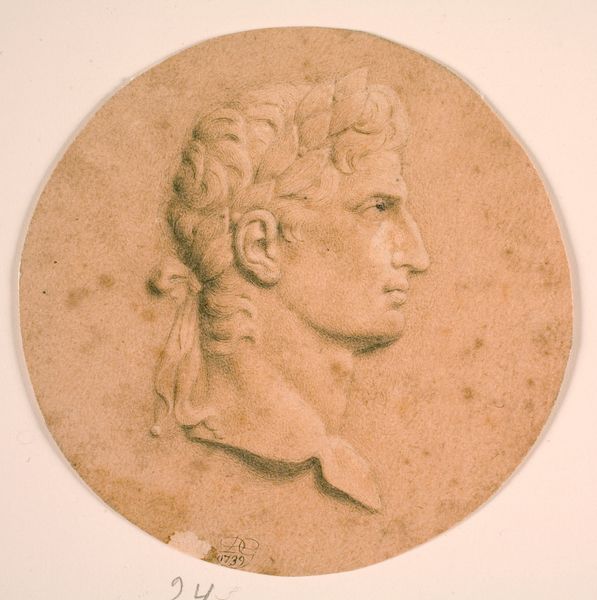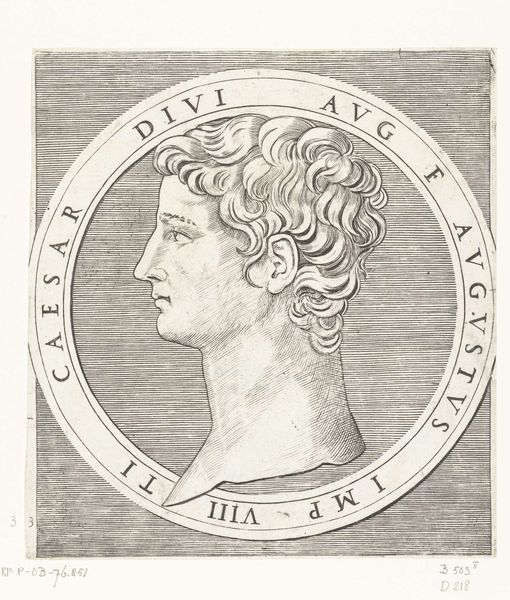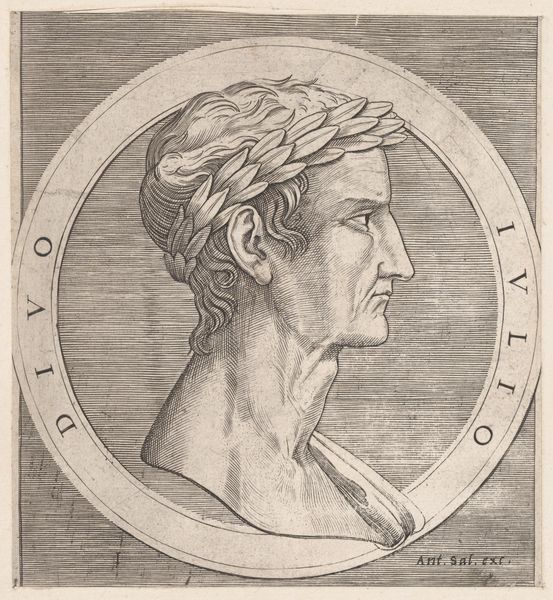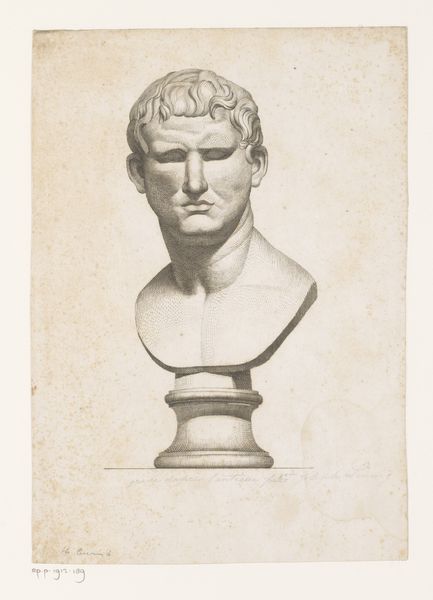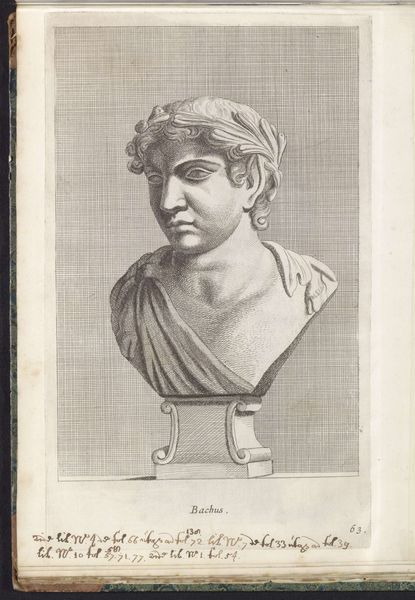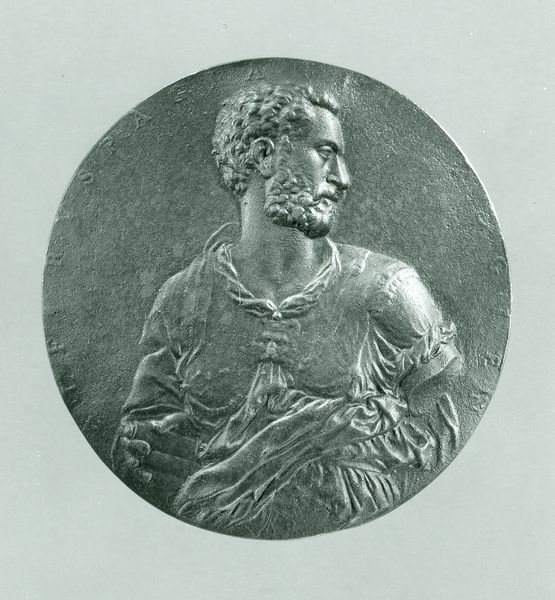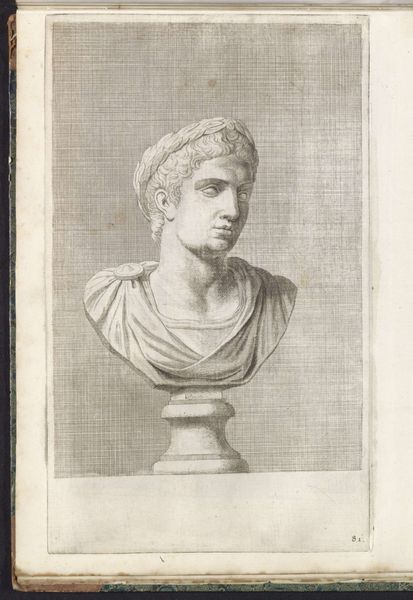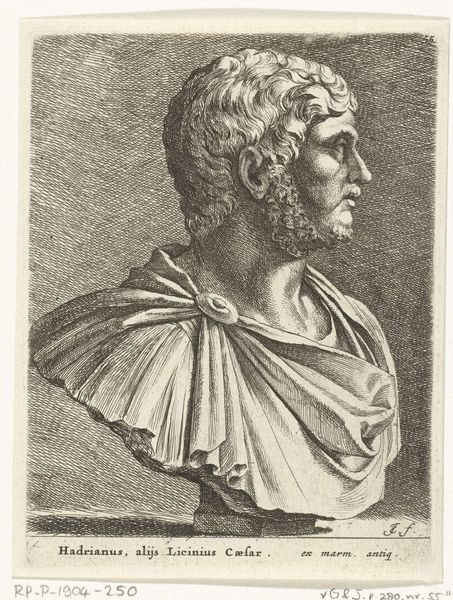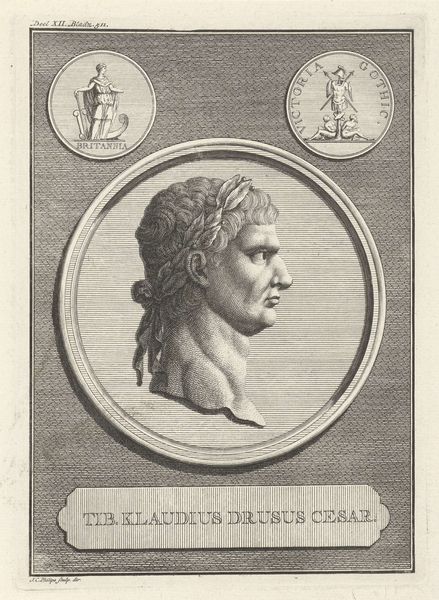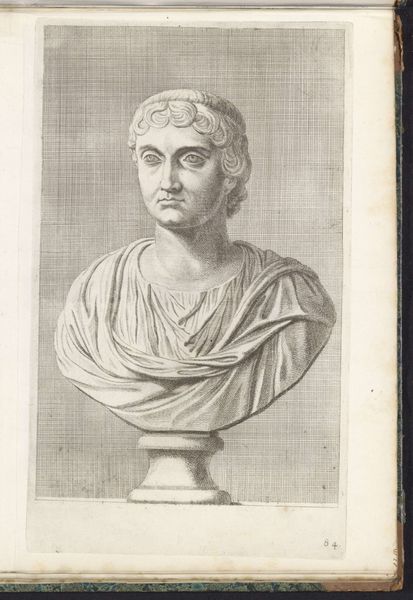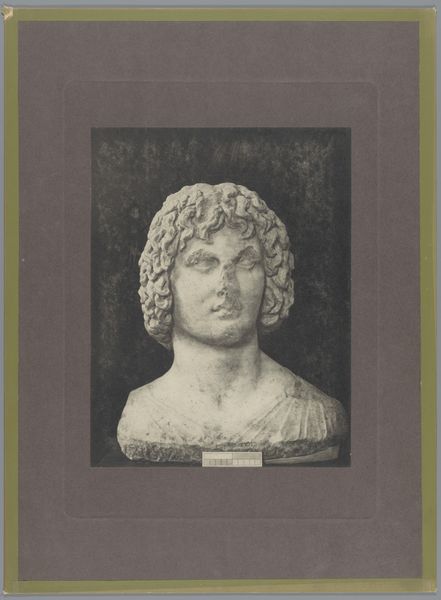
drawing
#
drawing
#
sculpture
#
charcoal drawing
#
sculptural image
#
possibly oil pastel
#
charcoal art
#
unrealistic statue
#
underpainting
#
watercolour illustration
#
watercolor
#
statue
Dimensions: 100 mm (None) (None)
Curator: Welcome. We're standing before Didrich Gercken's "Portrætmedaillon af Augustus. Romersk kejser," created around 1730. This drawing offers us a glimpse into the enduring power of Roman imperial imagery. Editor: My initial impression is of a study in contrasts. The stark profile rendered in what looks like charcoal and watercolour possesses a classical serenity, yet the somewhat ragged edge gives it a feeling of fragility. Curator: Precisely. Gercken, working well over a millennium after Augustus' reign, participates in a long tradition of representing power through classical allusion. Augustus, as the first Roman Emperor, set a potent example. This image is as much about Gercken’s era and the cultural capital associated with Rome as it is about Augustus himself. The revival of classical artistic values, architecture and its symbolic power have always been politically charged. Editor: The oval format mimics a carved gemstone or coin. There's a real sensitivity in the tonal variations achieved with the charcoal, building a three-dimensional form out of subtle gradations of light and shadow. Look at how that laurel wreath is depicted, see how it imitates sculpture so strikingly! Curator: That reference to sculpture highlights the institutional frameworks shaping artistic production. Academies encouraged copying from antique sculptures as a way of establishing artistic authority and demonstrating knowledge of classical ideals. Editor: Note the choice to portray Augustus in profile, that lends a certain stoicism. It directs the eye along a clear path from the forehead, nose, chin and chest. But notice, how, because of the color, he almost fades into the background! Curator: True. And even something like the placement of this drawing within a collection impacts its meaning. In a museum setting like the SMK, it becomes part of a larger narrative about art history, taste, and the ongoing relevance of the classical world to Danish identity and cultural values. Editor: The work’s formal elegance and restrained palette draw me in, a reminder of the power of suggestion inherent in a drawing like this one. Curator: For me, it sparks contemplation on the continuous negotiation between past and present and the enduring fascination with Rome, as it still reflects ideals of leadership. Editor: It shows how lines and shadows alone create something with real staying power.
Comments
No comments
Be the first to comment and join the conversation on the ultimate creative platform.
